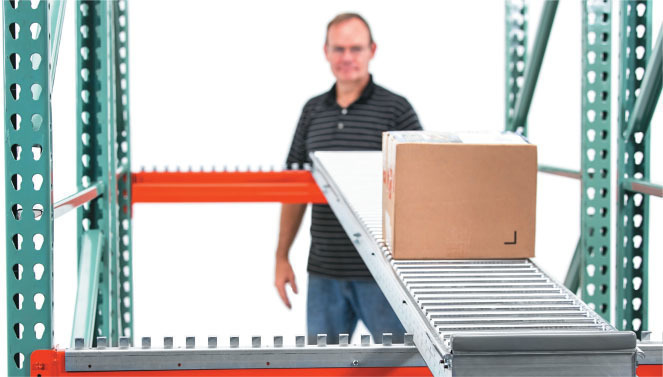
Twenty years ago, ergonomics “was kind of a nice thing to do,” said Jim Galante, chair of MHI’s Ergonomic Assist Systems & Equipment (EASE) Industry Group, but it was not an area that attracted close attention in material handling. In the decades since then, however, he said an aging workforce, increased obesity, rising workman’s comp costs and growing market pressure to do more with fewer people has greatly altered that perspective.
“People talked about it, but for the most part they weren’t paying much attention to it and why it’s important,” said Galante, director of business development for MHI member Southworth Products. “A lot has changed since then. Most companies today are taking a proactive look at the ergonomic conditions—or lack of them—in their facilities.”
Now comes what experts say could be a watershed moment in the field of ergonomics. Amazon earlier this year announced the rolling out of its WorkingWell safety and injury prevention program to its U.S. sites in 2021. The $300 million program is designed to cut workplace recordable incident rates by 50% by 2025. The program’s emphasis on ergonomics-related injuries could have a widespread impact.
“There are a lot of industries that look at Amazon and say, ‘Well, if they can do it, why can’t we?’” Galante said. “The simple fact that somebody has stepped up in a leadership role, a very high-profile company, and made this very obvious commitment to health and safety for their employees is definitely a landmark event.”
Brian McNamara, former CEO of Southworth Products, said the United States lacks the kind of clearly defined safety and ergonomic standards that are common in Europe. That means improving ergonomic conditions and paying increased attention to worker safety in the United States often depends on the proactive measures of businesses. McNamara said workplaces slow to embrace ergonomic improvements often are uncertain about how to invest in improvements that make a difference. Amazon’s ambitious tackling of ergonomics will help convince wary companies to take the leap, he said, because of the massive influence they hold.
“Like with its early implementation of automation, soon businesses everywhere will be watching Amazon closely to better understand its success,” McNamara said. “Suddenly companies will have a new impetus and confidence to pursue safer workplaces. Without any new requirements for regulation compliance, businesses will want to invest in the benefits of ergonomics and workplace safety simply because it is another highly publicized benefit of the Amazon way.”
One way that Amazon’s efforts promise to improve conditions in the United States is that the company can demonstrate to others how eminently achievable it is to reduce workplace injuries by focusing on ergonomics, experts said.
Amy Blueter, vice chair of EASE representing Kinetic Technologies, Inc., said companies have a range of ergonomics solutions to consider—from the technological to the procedural.
“No matter what industry you’re in, there are equipment and solutions designed to reduce ergonomic stressors,” said Blueter.
Galante agreed.
“Amazon is looking at reducing lifting, pushing, pulling,” Galante said. “They’re eliminating people bending over to load a pallet. They’re positioning work into that 30- to-40-inch ergonomic window where people are biomechanically as strong as they’re going to be, and they’re less likely to hurt themselves. The tools to improve the workplace are fairly inexpensive, they’re fairly easy to implement, and you’re going to get the results immediately.”
McNamara said there is a well-established connection between improved safety and improved productivity.
“Although Amazon may be focused on the issue of workplace safety now, there is no doubt they will realize they will pick up their productivity tremendously if they do all the things they say they’re going to do about safety,” McNamara said.

Galante said an improved understanding of the longterm impact of repetitive movements and the injuries they can cause has helped to sharpen focus on identifying better ergonomic conditions. This will be especially important for Amazon as their current high-speed automated processes place even higher handling demands on the many workers who interface with them, McNamara said.
“The injuries that we see today are cumulative,” Galante said. “There’s a global effect of using the same muscle groups over and over and over. Those muscles just end up fatiguing. And then one day, a worker picks up a pencil off the floor and throws his back out. It wasn’t the pencil—that had nothing to do with it—it was the fact that he had been using this muscle group so much in the same way, day after day, hour after hour, shift after shift. We’ve learned that we can’t continue to use our bodies like that. We have to put people in a position to do the work without hurting themselves in the long term.”
The EASE website serves as a valuable research tool for companies looking to identify ergonomic solutions that are the best fit for them. The site features a variety of case studies and other resources from 17 member companies along with contacts who can answer questions and provide additional insight.
“One size doesn’t fit all,” Blueter said. “You really have to look at the application, the operation, what you’re trying to achieve. There may be 10 different ways to do things. Deciding on which solution or solutions would be best for your situation requires taking a good look at what is actually happening out in the workplace and what the stressors are for those particular workers.”
To learn more about EASE, visit mhi.org/ease.
 MHI Solutions Improving Supply Chain Performance
MHI Solutions Improving Supply Chain Performance